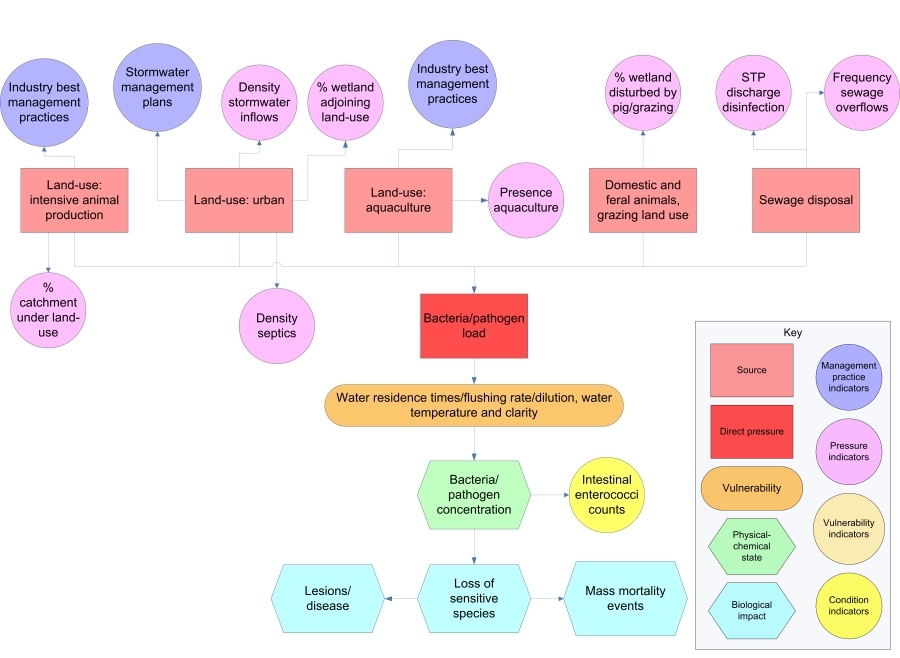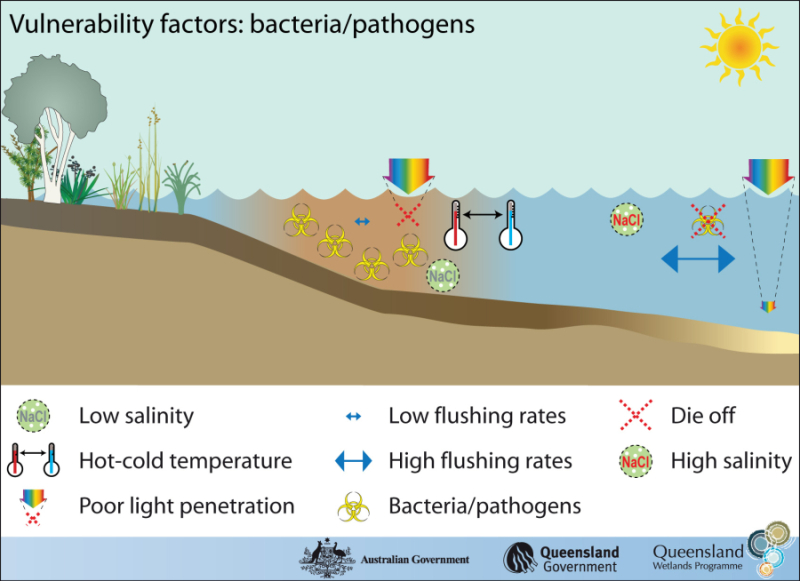|
|
Bacteria/pathogens – VulnerabilityBacteria/pathogens – VulnerabilityFlow chart showing the major elements associated with bacteria and pathogen management
Click on elements of the flow chart or select from the tabs below
Last updated: 22 March 2013 This page should be cited as: Department of Environment, Science and Innovation, Queensland (2013) Bacteria/pathogens – Vulnerability, WetlandInfo website, accessed 8 May 2025. Available at: https://wetlandinfo.des.qld.gov.au/wetlands/management/pressures/lacustrine-palustrine-threats/bacteria-pathogens/vulnerability.html |

 — Department of the Environment, Tourism, Science and Innovation
— Department of the Environment, Tourism, Science and Innovation




